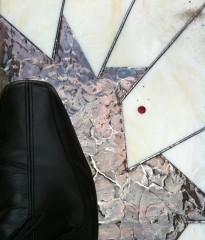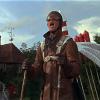Search the Community
Showing results for tags 'steel'.
-
So, can Lurchers Pull objects hidden in buildings. For example, I'm standing on a street and there's a huge chunk of metal inside a building. Can I Pull on it? I finished the first three Mistborn books, but I forgot about this.
-
Hey all, Vice, nice to meet you all. I have a couple of character ideas based on the infrastructure Mr. Sanderson created with the twinborn addition to Scadrial. A group of talented mistings and ferrings split from the familiar lands under the influence of the Lord Mistborn. They journeyed to the lands furthest from civilization to start a new way of life based on the philosophy of perfecting the art of allomancy and ferruchemy. Over time the masters developed their ideas and created a synthesis between burning allomantic fuel and perfection of movement. This combination of mastery generated the primary component of this new art, "pulsing (vs. "burning")" Pulsing is a consistent consumption of allomantic fuel cycled and maintained by a misting. Average consumption is likened more to an automobile engine, revving the output with a pedal-push modality. Pulsing regulates the output to a wave or a frequency. The high and low cycles maximizes fuel consumption and promotes precision control of output. Enter our first character, Locke Smythe, iron compounder: lifelong practice with tai chi chuan has given him absolute control of his core movement. Combining iron pulling with perfect spatial positioning allows him to influence the trajectory of a yanked object, hulahooping an object around himself to launch at opponents, very much like chained weapons. As a child, Locke was made to practice orbiting a dripping paintbrush around himself while standing on parchment. His masters used his "paintings" as a measure of his control. Locke had to maintain the initial speed and momentum by modulating his pull. Rhythmic timing, giving just enough pull to alter its trajectory and momentum, can create extremely controlled figure eight patterns which intuitive proficiency can weaponize. Once Locke proved his mastery over his "pulse" weapon he began training his control over accessing and storing his weight to and from his ironmind. His masters would position needles above and below him while having him maintain his perfect weight to hold position between them (while tethered so the wind wouldn't blow him away). Once he developed intuitive control over his weight modulation he had to practice jumping "light"(with reduced weight) and falling"heavy" to light soft landing, in sequence with spinning studded boards offset to give him safety only as he continues to jump and land unerringly. Locke soon found that by launching his weapon skyward and then lightening himself enough to be yanked by his pull on his airborne weapon he could weapon toss himself as far up and as far away as he wanted. To land he adds weight enough to descend at a comfortable speed and around twenty to ten feet above landing he sends the weapon skyward again pulse-pulling himself to a controlled touchdown. Further training experimentation has turned Locke into a competent airborne opponent capable of chasing down escaping coinshots. Currently he is developing an bow-launched gauntlet that can fire serrated pins, shuriken and bolts that dig deep in opponent flesh and create metal anchors he can use to control the victim's position. Once captured, Locke can then parabola-whip his enemies around himself and launch them at their allies or merely distort their positioning in melee combat destroying their balance and dropping them negative space or placing them inside his range. Opponents can be kicked away and yanked back for more destruction all while the anchor is moving inside their flesh. Some success has been had in launched clawed chains that dig into armor and become sturdy anchors for Locke's manipulation. In a pinch, bullets or leadshot become reliable tools for manipulation. I invite thoughts, criticisms, witticisms and the like -Vice
- 4 replies
-
2
-
- twinborn
- characters
-
(and 9 more)
Tagged with:
-
So, in one thread on this board that I don't want to source, it is theorized that tapping a steelmind essentially makes a bendalloy bubble around you and only you. So, then, could you live for much longer than you otherwise would? Of course you would still age, but assuming you don't get shot and you have an external food supply and all that, could you survive indefinitely? With, of course, steelminds being changed once filled.
-
-
I am in a rather heated debate as to who would win in a fight between Marsh the steel inquisitor and Geralt from the Witcher series. We've eliminated outside help, but all weapons and metals are available. I'm on the side of Marsh (for obvious reasons) and I will debate if you wish, but I would like a nice, unbiased discussion on this topic.
- 13 replies
-
1
-
First off, let's assume that Steelrunners automatically speed their minds up as well as their body, otherwise they would be constantly crashing into things. Now let's take a Steelrunner/Pulser Twinborn. (Feruchemical!Steel, Allomantic!Cadmium.) The Twinborn pops up a Cadmium bubble, slowing down everyone around her, but then taps speed, returning herself to normal speed when compared to people outside the bubble. You can now communicate with people outside the bubble, while everyone around you is frozen. Good for lots of things, such as defusing bombs, searching a person, getting outside help, and so on. Why do I bring this up? Because Marasi is a Pulser, and there is a Feruchemical!Steel Spike floating about. I'd bet that somehow, she ends up with it.
-
From the Ars Arcanum: The blue lines of iron-sight and steel-sight seem to hold a lot of information. For example, Oudeis provided evidence before that Ranette's use of iron may have given her the ability to identify other metals, simply using her ironsight. Maybe this is because she's an iron savant? With this in mind, what if there is more information to be gleaned about metals and their relationship to iron and steel sight? The Ars Arcanum quote above leads me to believe that the size of the blue line is directly correlated to the "size" of the metal source and that the brightness of the line depends on the "proximity" of the metal source. A lot of quotes from the original Mistborn trilogy seem to back this up. However...I've found inconsistencies in the quotes from the original trilogy AND I want to propose that the word "size" is incorrect. I'd argue that "mass" makes more sense instead and would fit better with Ranette's metal identification skills. This quote shows that proximity does in fact have an effect on the brightness/illumination of the blue lines. It reminds me of the Doppler Effect. As you move away from the metal sources the color dims like the sound of the waning Doppler Effect. We also have a mention of width, but nothing to the effect of size or mass. The next quote helps us here better. Here we see that the size of the metal dictates the thickness of lines. Seems pretty straightforward, and confirms the Ars Arcanum, right? The bold sentence (emphasis mine) contradicts the Ars Arcanum. The word "faint" should be replaced with "thin", because a size, small, is referenced afterwards. Here Kelsier is confusing the correlation of the illumination of the blue lines with what should instead be a description of the blue lines thickness. Either Kelsier is misinformed or Brandon made a mistake here. Whichever it is, this led me to think more about what the full description of the blue lines really means. There is plenty of evidence (which I won't quote here) throughout the books that shows that the illumination of the blue lines is indeed correlated with proximity. I have no problem with this observation by the author of the Ars Arcanum or the other characters in the book. However, I believe that interpreting thickness as "size" is incorrect. All the evidence in the book shows that proximity and illumination vary while the thickness of the blue lines never varies when an person is burning iron or steel and looking at their blue lines. At least, there is never a description of the thickness changing. This, to me, is because the mass of an object is fixed. Yes, size matters too, but it's more than that. It's quite common for size to be misinterpreted when commonly talking about mass. Here's how Wikipedia defines mass with regards to physics: Does this sound familiar? I think so. It sounds a lot like how the iron and steelsight actually works. When Vin is first testing out her steel push with Kelsier on the top of the Luthadel wall, she notices that there is a limit to how how high she can push. Her steel-line fades in color, but she never comments upon the thickness. This is because the mass of the coin doesn't change. It's fixed because of the metal the coin is made out of. But what would happen if she uses a coin with a higher mass? The "size" is the same, but the mass increases...would the thickness of the steel-line increase and thus allow Vin to push herself even higher? I'd argue yes. Let's think about this slightly differently. As we move down the periodic table of elements, each element has a higher atomic mass. Thus, the same number of atoms for gold, for example, will have a higher mass than the same number of atoms for iron. Now let's compare the same size unit for these metals: a cubic foot of iron weights 491 pounds while a cubic foot of gold weighs 1206 pounds. All because the mass of the atoms of the two elements is different. Would we really expect equal steel push strength on both of this slabs of metal? I'd argue no, because I think steel pushing specifically relates to the mass of the object you're pushing against. Thus size is irrelevant. But mass is important. Let's pretend Vin uses a gold coin instead of an iron coin to push herself. I'd argue that since the mass is different but the size is the same, she'd observe a thicker blue line AND be able to push her self higher. What implications does this have on the whole for Scadrial? Well, a weaker coinshot could artificially inflate their powers by using coins with a higher mass relative to a stronger coinshot using simple iron coins. Thus they'd appear to be stronger than they actually are, because everyone thinks steel pushing is all about size of the metal source instead of mass. This reminds me of arbitrage in finance. If someone were to discover this, they could take advantage of this information. Which brings us back to Oudeis' insight on Ranette's ability to determine which metals are what simply by using her ironsight. Is she identifying metals because of each metals unique mass as seen through the blue lines of her ironsight? Yes, if you ask me.
-
-
-
The books give us very little in the way of information on Allomantic Savants, but ever since first reading the second book years ago, i've been fascinated by the implications. Does anyone know if Sanderson has given any hints about Savants other than tineyes? Could a misting reach duralumin boosted levels with their allomancy? Could an Atium misting with a mountain of atium theoretically gain true future sight from atium as Elend did via duralumin There's so much unexplored territory with the savants.
-
So I just have a quick question that I haven't found an answer to yet. Maybe I've just over looked it. But I'm listening to the Alloy fo Law audio book and I'm at the fight on the top of the train and at one point, Wax Pushes off the tracks a couple times. My question is this: To what part of the metal do the blue lines of Steel/Iron point if the metal is extremely long? My initial instinct was to say the middle but then I though about super long beams of metal like the tracks and it made me reconsider. Something I hadn't thought of till I was typing this was maybe it just reads each different section of the bars on the tracks as a separate piece of metal, but that's still pretty long. And then you look at cars or huge girders or very long poles. For instance the spires of Kredik Shaw. Vin pulled herself up to the tips of these a few times if I remember right. So do the lines move? What do you think?
-
Hypothetical scenario time! Wax, Wayne and Marasi are standing in a room. Wax Pushes a coin outwards, and then, simultaneously, Marasi creates a cadmium-bubble the size of the room and Wayne creates a bendalloy-bubble around the three of them, leaving them standing in regular time while the rest of the room, including the coin, which is now moving quite slowly, is in slow-time. Wax then moves around a little and Pushes on the coin from a different angle. How does the Push affect the coin? Okay, I just realized I made this sound like a textbook question, but I genuinely want to know if we know, if that makes sense. Does the Push 'slow down', and act like it normally would, but in slow-mo. Or would it work differently?
-
I read the mistborn series while taking a class on calculus-based Newtonian physics, so I couldn't help but formalize a theory on how steel/iron allomancy would actually work. There has already been a topic on how weight is related to the strength of push/pulls, and you can read it here http://www.17thshard.com/forum/topic/3307-weight-has-nothing-to-do-with-allomantic-pushpull-strength/?hl=%20allomancy%20%20mass%20%20weight. But I want to introduce a new theory (with a bit of math) that I think clears up a lot of the confusion. I'm not incredibly physics-savvy, so I explain something terribly wrong, I apologize. (For the sake of efficiency, when I say allomancy, I am referring specifically to Iron and Steel) The Force of Pushes and Pulls First, I am operating under the assumption that weight is only tangentially related to the force an allomancer can exert. Instead, it is actually the mass involved that is important. Weight is the force exerted on an object by the planet equal to the mass of the object multiplied by the acceleration due to gravity. Most people (including the mistborn characters) probably mean mass when referring to allomancy. So I came up with an inverse-squared formula to determine the force an allomantic push/pull can exert. F= (A x (m1 x m2))/(r2), where F is the resultant force, A is the coefficient of Allomantic strength (I'll get into this later), m1 is the mass of the allomancer, m2 is the mass of the object, and r is the distance between the two masses. (The force is positive for Lurchers, and negative for Coinshots). I based this off of the Newton's Law of Gravitation since the principles involved appear very similar to me. When the earth pulls on an object, the object is actually pulling on the earth with the same force. However, the earth has so much more mass than the object so it effectively doesn't move. If a much larger object, like another planet, were to come near the earth, then both it an the other planet would move towards it at noticeable speeds. And again, if a much more massive object, like the sun, where to come near the earth, you wouldn't see the sun move,, just the earth. This is very similar to how a Coinshot can send a coin flying, but be pushed into the air by a much heavier object. The coefficient of allomantic strength accounts for the varying levels of power between different allomancers. This variable changes depending on how hard the allomancer is pushing/pulling (i.e. by flaring). In this way, both the mass and strength of the allomancer are important to the amount of force he/she can exert. Both the allomancer and the object are affected by the same force, but the less massive object accelerates much faster. The force also decreases quadraticaly as the distance between the object and allomacer increases. So I did some math the figure out about what this coefficient of allomanctic strength would be...and kept doing things wrong. At first I made the mistake of assuming a coinshot was pushing on a coin in free space, which resulted in a Coinshot strong enough to move planets. Then I tried having him push against the mass of the planet, which came out to him being ridiculously weak. I finally realized that when you are pushing off of a coin, your effectively pushing off a certain amount of ground, not the entire planet. I have no idea how you would calculate the mass of the ground however, so my formula is now un-provable without some more concrete measurements of allomancy . Feruchemical Iron This theory requires some pretty weird physics concepts. There's been a lot of discussion about what is actually stored with Feruchemical iron, but I think this theory coveres it pretty well. Basically, there are two different measures of mass: gravitational mass and inertial mass. Gravitational mass affects the gravitational field exerted by an object, and also how it is affected by other fields of gravity. Inertial mass is how much an object resists changes in motion. So far as we know, the two values are the exact same for any object and are functionally the exact same concept, in the real world. However, in the Cosmere, it appears you can change one without changing the other. I propose that Feruchemical iron merely stores the feruchemist's inertial mass. This means that nearly every force will affect the feruchemist as though they had gained more mass when the feruchemist is tapping, and vice-versa for storring. Gravity, however, affects the feruchemist the same as normal. The difference is, say when the feruchemist jumps while storring, the force of the jump affects him much more, with gravity affecting him the same, resulting in a much higher jump. Similarly, while falling, drag affects the feruchemist much more, resulting in a slower fall. This also solves the issure of the feruchemist suffering not crushing themselves while tapping, because their atoms become more resistant to motion in direct correlation with the increase of inertial mass. This increase in inertial mass would also factor directly into my above equation for allomancy. Since the force is directly proportional to the mass of the allomancer, tapping iron results in a greater force, both on the allomancer and the object. However, the increased force accelerates the allomancer the same as normal force the allomancer is now proportionately more resistant to motion. Now a potential hole in my theory is that the reverse should also be true. Decreasing your inertial mass would make forces affect you more, but would also reduce the strength of your Push/Pull. In the AoL, Wax is more affected by Pushing while storing Iron, and I can't figure out how to account for this mathematically... I wanted to have a bunch of physics and math extrapolated from this...but most of my calculations were really flawed.... Anyway, thoughts? Criticism? Any real physicists who wants to tell me I explained this all wrong?
-
The theory behind Feruchemy is that you store now, enhance later. There is also no limit to the amount of "enhancing". Therefore ... could Steelrunners move faster than light, albeit for a fraction of a nanosecond?
-
-
3
-
- steelheart
- metal
-
(and 8 more)
Tagged with:
-
I have seen a reoccurring theme in these forums in regard to the relationship between steel pushing/iron puling and weight. I am hoping I can dispel some confusion on the matter. I am hoping you can forgive me if I quote the book incorrectly I am transcribing from the audiobooks(Don't judge me. I drive a lot.) and don't have the texts to reference. I believe this whole idea comes from when Kelsier was training Vin. After they get in a pushing match. Kelsier Tells her, This I think has been interpreted to mean than heavier people have a stronger push. If you look to their first training session Kelsier has already explained quite clearly that is has to do with action and reaction. After Kelsier tells Vin not to get in a push matches, Vin recalls this earlier lesson and reasons, The reason for not getting into a push match with someone heavier is NOT because they are stronger pushers but because their body is a better anchor. Summary: weight has nothing to do with steel pushing strength. edit: added quote boxes

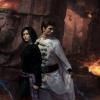

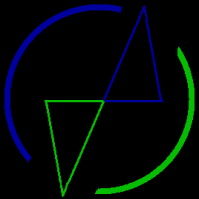
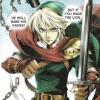
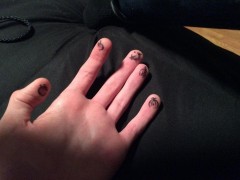
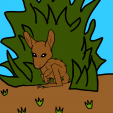


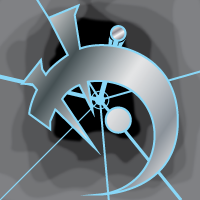
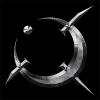
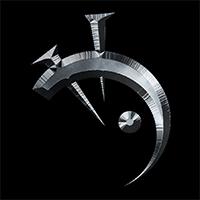
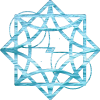

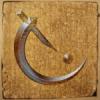
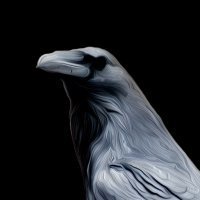
.thumb.jpg.d618d64f5e470e32fd5394998cf4cc06.jpg)
